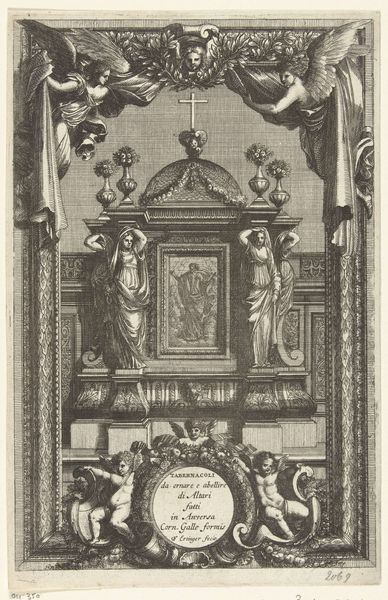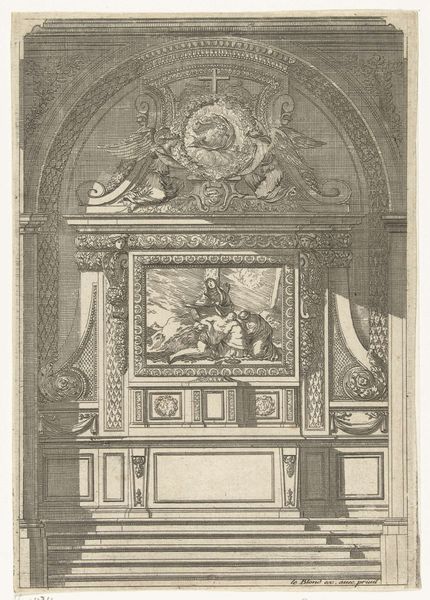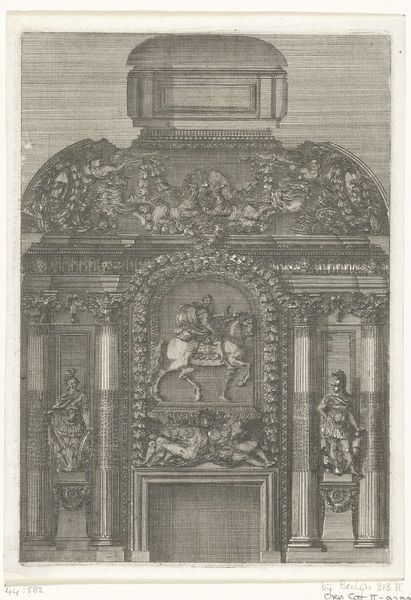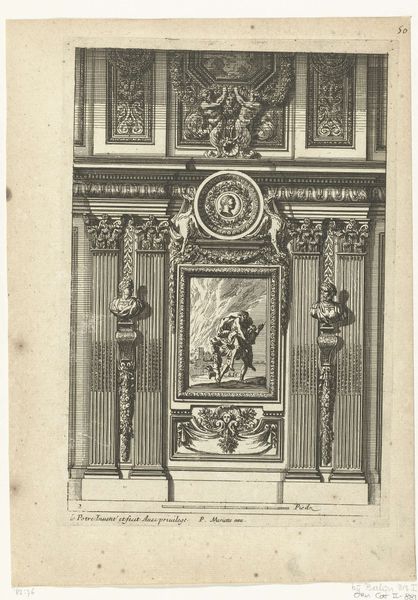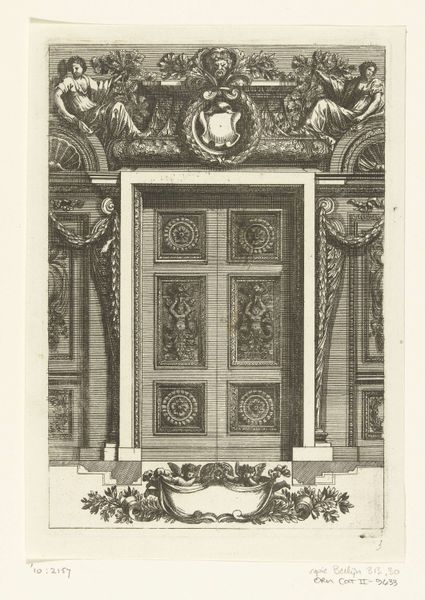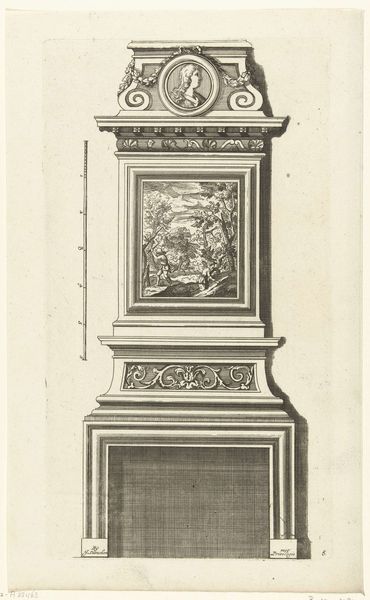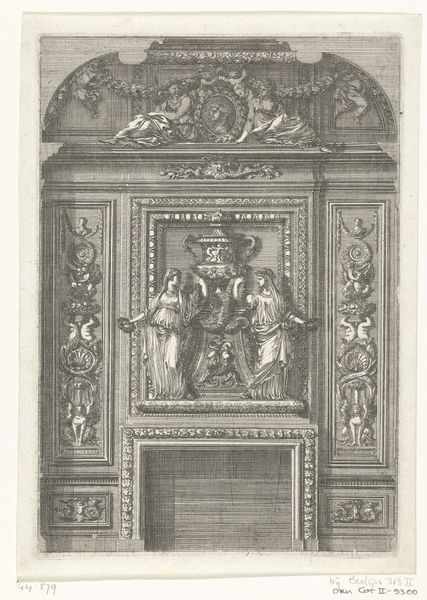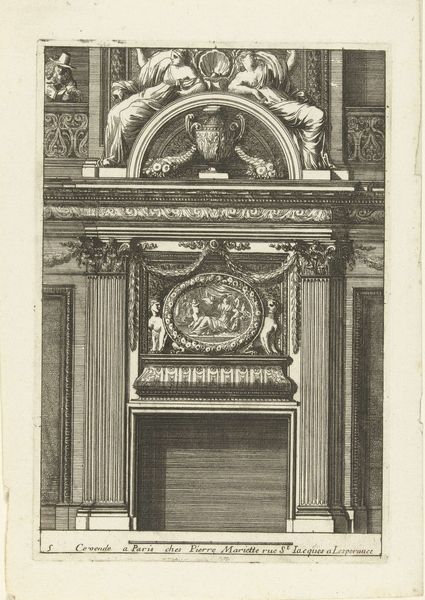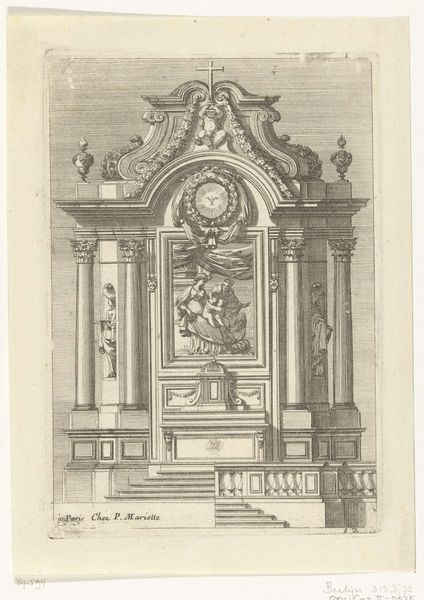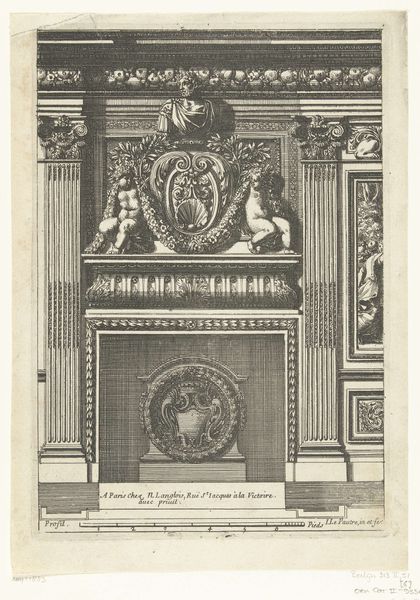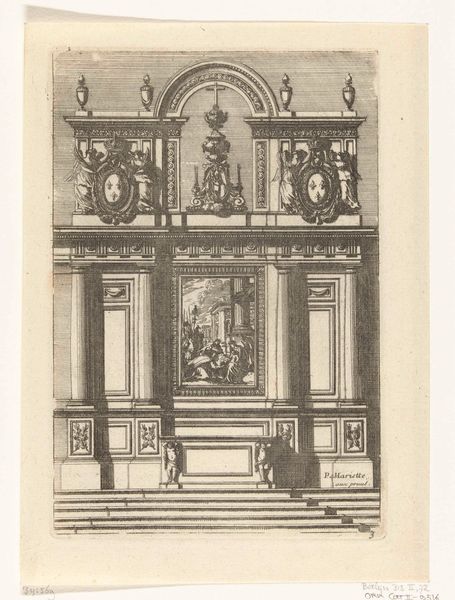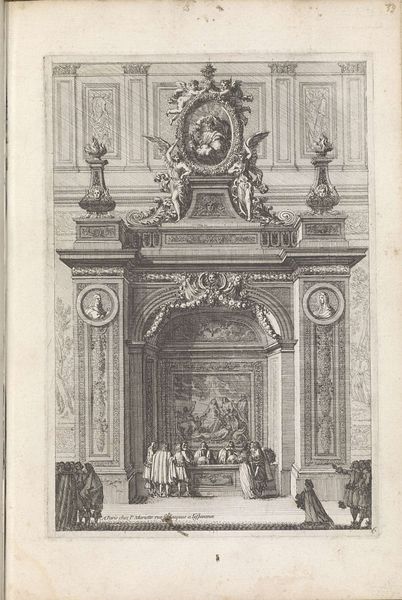
drawing, print, paper, engraving
#
drawing
#
baroque
# print
#
old engraving style
#
landscape
#
paper
#
pen-ink sketch
#
history-painting
#
engraving
Dimensions: height 197 mm, width 136 mm
Copyright: Rijks Museum: Open Domain
Editor: Here we have "Niche with painting and two putti," an engraving on paper by Jean Lepautre, circa 1651. It depicts a framed landscape painting held by cherubs within a highly ornate architectural niche. I'm struck by the contrast between the rather pastoral scene within the painting and the imposing formality of the architectural surround. What sociopolitical dynamics were at play during the piece’s construction? Curator: It's a fascinating tension, isn't it? Think about the Baroque period – a time of immense social stratification, of rigid codes and power structures. Lepautre’s choice to place this seemingly innocent landscape within such a grandiose, almost oppressive, framework could be read as a commentary on the role of art itself. Editor: Commentary in what way? Curator: The painting, the artistic expression, becomes a commodity, confined and controlled by the architecture representing established power. Consider who was commissioning and consuming art at this time – primarily the aristocracy. This artwork acts as a mirror reflecting the limited freedom of creative expression to subvert class structures because the canvas has to align with elite interests, or, perhaps, more liberally, highlights the limited perception that elite patrons may hold regarding the work and agency of lower artists. Does the text below add another dimension of understanding, perhaps revealing class dynamics implicit in its composition? Editor: Yes, I see your point. And the text, in French, might point towards the engraving acting as an advertisement, suggesting where similar art could be acquired. So, the cherubs aren't just decorative; they're actively involved in promoting commerce and access controlled by the bourgeoisie! It almost reveals the hypocrisy of aesthetic reverence without financial backing. Curator: Precisely! By bringing that theoretical understanding to bear, it’s no longer just a decorative print. It becomes a subtle critique of patronage and the commodification of art. Editor: This new context provides not only insight into the themes of high art and history painting, but adds relevance to present-day themes that consider fair compensation to creatives. Curator: Indeed, looking closely can provide important historical commentary on intersectional themes between creatives, curators, historians and patrons.
Comments
No comments
Be the first to comment and join the conversation on the ultimate creative platform.
